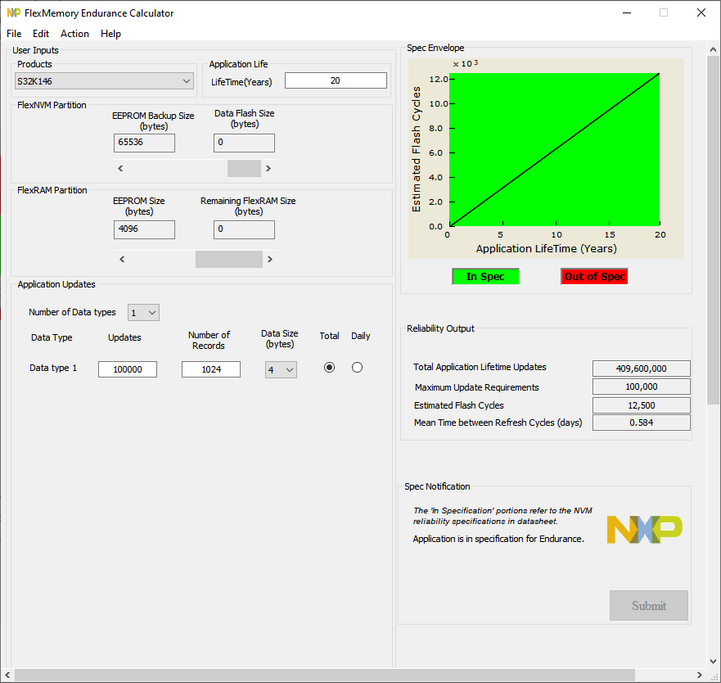- NXP Forums
- Product Forums
- General Purpose MicrocontrollersGeneral Purpose Microcontrollers
- i.MX Forumsi.MX Forums
- QorIQ Processing PlatformsQorIQ Processing Platforms
- Identification and SecurityIdentification and Security
- Power ManagementPower Management
- MCX Microcontrollers
- S32G
- S32K
- S32V
- MPC5xxx
- Other NXP Products
- Wireless Connectivity
- S12 / MagniV Microcontrollers
- Powertrain and Electrification Analog Drivers
- Sensors
- Vybrid Processors
- Digital Signal Controllers
- 8-bit Microcontrollers
- ColdFire/68K Microcontrollers and Processors
- PowerQUICC Processors
- OSBDM and TBDML
-
- Solution Forums
- Software Forums
- MCUXpresso Software and ToolsMCUXpresso Software and Tools
- CodeWarriorCodeWarrior
- MQX Software SolutionsMQX Software Solutions
- Model-Based Design Toolbox (MBDT)Model-Based Design Toolbox (MBDT)
- FreeMASTER
- eIQ Machine Learning Software
- Embedded Software and Tools Clinic
- S32 SDK
- S32 Design Studio
- Vigiles
- GUI Guider
- Zephyr Project
- Voice Technology
- Application Software Packs
- Secure Provisioning SDK (SPSDK)
- Processor Expert Software
-
- Topics
- Mobile Robotics - Drones and RoversMobile Robotics - Drones and Rovers
- NXP Training ContentNXP Training Content
- University ProgramsUniversity Programs
- Rapid IoT
- NXP Designs
- SafeAssure-Community
- OSS Security & Maintenance
- Using Our Community
-
-
- RSS フィードを購読する
- トピックを新着としてマーク
- トピックを既読としてマーク
- このトピックを現在のユーザーにフロートします
- ブックマーク
- 購読
- ミュート
- 印刷用ページ
- 新着としてマーク
- ブックマーク
- 購読
- ミュート
- RSS フィードを購読する
- ハイライト
- 印刷
- 不適切なコンテンツを報告
Dear NXP-Team,
I have difficulties to understand the calculations of the endurance of EEPROM.
First we have the table from the data sheet:
Second I have the output of the calculator:
I configured the calculator as follows:
65536B of EEPROM Backup size, 4096B of EEPROM size
--> I assume this should lead to a FLEXRAM ratio of 16.
I further more configure 4096 records with 1 byte each. In my book this should lead to 100k write cycles as indicated in the table above. However ... it does not.
I dont understand the section from green to red at 12.500 flash cycles. The table above indicates a max of 1.000 flash cycles
I furthermore dont understand the relation between 100.000 update requirements lead to 25.000 flash cycles. In my understanding, it should lead to 100.000/16 (ratio) = 6.250 flash cycles.
Could you please clarify my wrong understanding?
Kind regards
Stefan
解決済! 解決策の投稿を見る。
- 新着としてマーク
- ブックマーク
- 購読
- ミュート
- RSS フィードを購読する
- ハイライト
- 印刷
- 不適切なコンテンツを報告
Hello Stefan,
Please have a look at the footnotes in the table:
The 100k specification is for 16-bit and 32-bit writes only.
This is because one 8-bit record take the same amount of the EEPROM backup flash as one 16-bit record.
Thus the 25000 flash cycles in you example.
It is 12500 in the example below that uses 32-bit writes only.
Basically, the FlexNVM is more efficient in the Emulated EEPROM mode.
As the footnote 6 says, "For usage of any EEE driver other than the FlexMemory feature, the endurance spec will fall back to the specified
endurance value of the D-Flash specification (1K)."
Regards,
Daniel
- 新着としてマーク
- ブックマーク
- 購読
- ミュート
- RSS フィードを購読する
- ハイライト
- 印刷
- 不適切なコンテンツを報告
Hello Daniel,
an additional question to FlexNVM endurance: Does it matter in which arrangement data is stored in the FlexRAM / Eeprom?
To get a (logical) separation of different data areas, I created 1kByte blocks in the eeprom in the linker script and distributed the eeprom data accordingly. Since this data never has a size of 1kByte, free areas remain between the individual blocks. Does this affect the lifetime of the FlexNVM?
For a better unterstanding see attached file "eeprom_layout.png"
- 新着としてマーク
- ブックマーク
- 購読
- ミュート
- RSS フィードを購読する
- ハイライト
- 印刷
- 不適切なコンテンツを報告
Hello Sebastian,
It does not matter:
"EEE writes don’t have to be to sequential location, indeed user can write to any valid location and/or write to the same address more than once."
AN11983 Using the S32K1xx EEPROM Functionality
Section 3.6.1 EEE writes
https://www.nxp.com/docs/en/application-note/AN11983.pdf
Regards,
Daniel
- 新着としてマーク
- ブックマーク
- 購読
- ミュート
- RSS フィードを購読する
- ハイライト
- 印刷
- 不適切なコンテンツを報告
@danielmartynekThanks a lot!
- 新着としてマーク
- ブックマーク
- 購読
- ミュート
- RSS フィードを購読する
- ハイライト
- 印刷
- 不適切なコンテンツを報告
Hello Stefan,
Please have a look at the footnotes in the table:
The 100k specification is for 16-bit and 32-bit writes only.
This is because one 8-bit record take the same amount of the EEPROM backup flash as one 16-bit record.
Thus the 25000 flash cycles in you example.
It is 12500 in the example below that uses 32-bit writes only.
Basically, the FlexNVM is more efficient in the Emulated EEPROM mode.
As the footnote 6 says, "For usage of any EEE driver other than the FlexMemory feature, the endurance spec will fall back to the specified
endurance value of the D-Flash specification (1K)."
Regards,
Daniel



